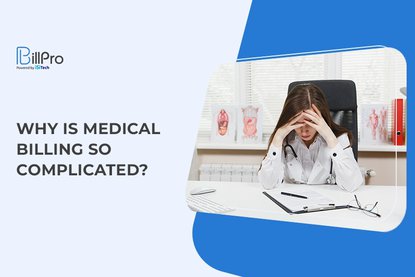Medicaid claim processing consists of a lot of behind the scenes work. Medical billers and coders are responsible for bringing these claims to life in a way that helps insurance providers understand how much they are paying and what services they are paying for. To best understand how these claims come to be, it’s important to start at the beginning. We’ve outlined an in-depth look at how an insurance claim begins and the journey it takes to become a fully paid claim.
The Lifecycle of a Claim
We’ve outlined an in-depth look at how an insurance claim begins and the journey it takes to become a fully paid claim.
Pre-appointment Details
The lifecycle of a claim begins when a patient books their appointment. This is when important patient and insurance information is collected so that the provider has everything they need when it comes time to create the bill. At this stage, the provider will also decide whether prior authorization is needed for the service and how much of the service might be covered.
Patient Arrival
When the patient arrives for their appointment, whether it’s an in-person checkup, surgical procedure, or telehealth appointment, they will have to confirm both their personal information and insurance information. If these things are not verified again, there’s a chance incorrect information could be submitted on the final claim. Even if a patient recently provided this information, it’s a good idea to confirm that it’s still correct before the appointment begins. If a patient is responsible for a copay, they will be asked to pay it either before or after the appointment.
Claim Creation and Submission

Medical billers create the claim once the appointment is over based on the information gathered before and during the appointment. The claim includes patient and insurance information, details about the service received during the healthcare visit, and anything else pertinent to the billing process. Once the claim is created, it gets passed along to a medical coder who translates that information into a coded document that payers use to determine the amount they are able to pay.
Adjudication
During this process, the payer evaluates the claim and decides whether or not it meets all standards. This includes accurate coding and patient information, medical necessity, appropriate authorization, and more. After the payer assesses the claim, they will be able to make a financial decision.
Claim Decision
Once a claim is in the payer’s hands, there are three possible outcomes: the claim is accepted, rejected, or denied. If a claim is accepted, it means no errors were found and the claim is able to be paid as it stands. If a claim is rejected, it means that one or more errors were found and the claim can’t be paid as is. It will then be returned to the provider to fix and resubmit. And lastly, if a claim is denied, it means that the claim has a vital error and therefore can’t be paid. The claim may be able to be fixed, or it may not be, depending on what the error is.
Explanation of Benefits
Before a patient receives an official bill, they’ll receive an explanation of benefits in the mail. This document essentially lays out the services the patient received, along with the accompanying codes, and shows the total cost, the amount insurance will cover, and the amount the patient is responsible for.
Patient Billing and Payment

Not long after the explanation of benefits are received by the patient, they will receive the actual bill. The bill will reflect the amount owed by the patient, along with a payment deadline. Depending on the cost, the patient may either pay off the amount in one go or have to work out a payment plan with the insurance company.
Follow Ups and Collections
If the patient pays their portion of the claim by the deadline, that’s the end of the lifecycle of an insurance claim. However, if they miss their payment, they’ll quickly receive a follow-up call and letter from the insurance company. If that request for payment is ignored, a collections agency may have to get involved to ensure the payment is made.
How to Simplify the Process
The medical billing process isn’t an easy one. Everyone who works in the industry understands this, however, there are ways to alleviate the difficulties billers face. Finding reliable Medicaid billing software for your operation is a great way to save both time and money and develop a more efficient process for managing the lifecycle of an insurance claim. While the cost of Medicaid billing software varies depending on what exactly you’re looking for, it’s well worth the investment for any practice. Automated billing allows for more accurate claims, faster reimbursements, and an overall better workflow. It enables better communication and teamwork for your employees and makes for a more positive billing experience. If you’re ready to see billing software in action, book a free demo with the team at BillPro today!

 4/5 (3 votes)
4/5 (3 votes)
 2605 views
2605 views




